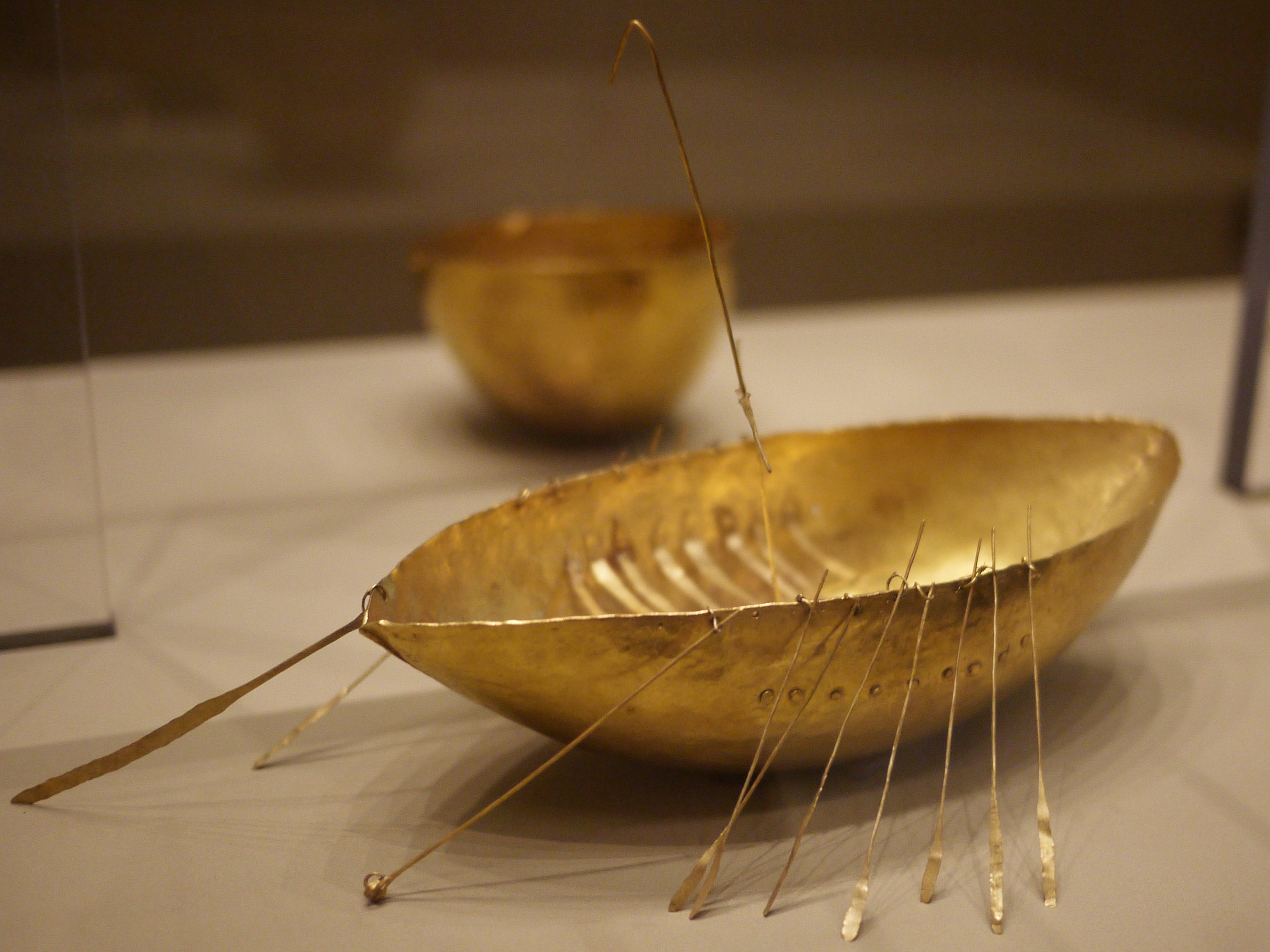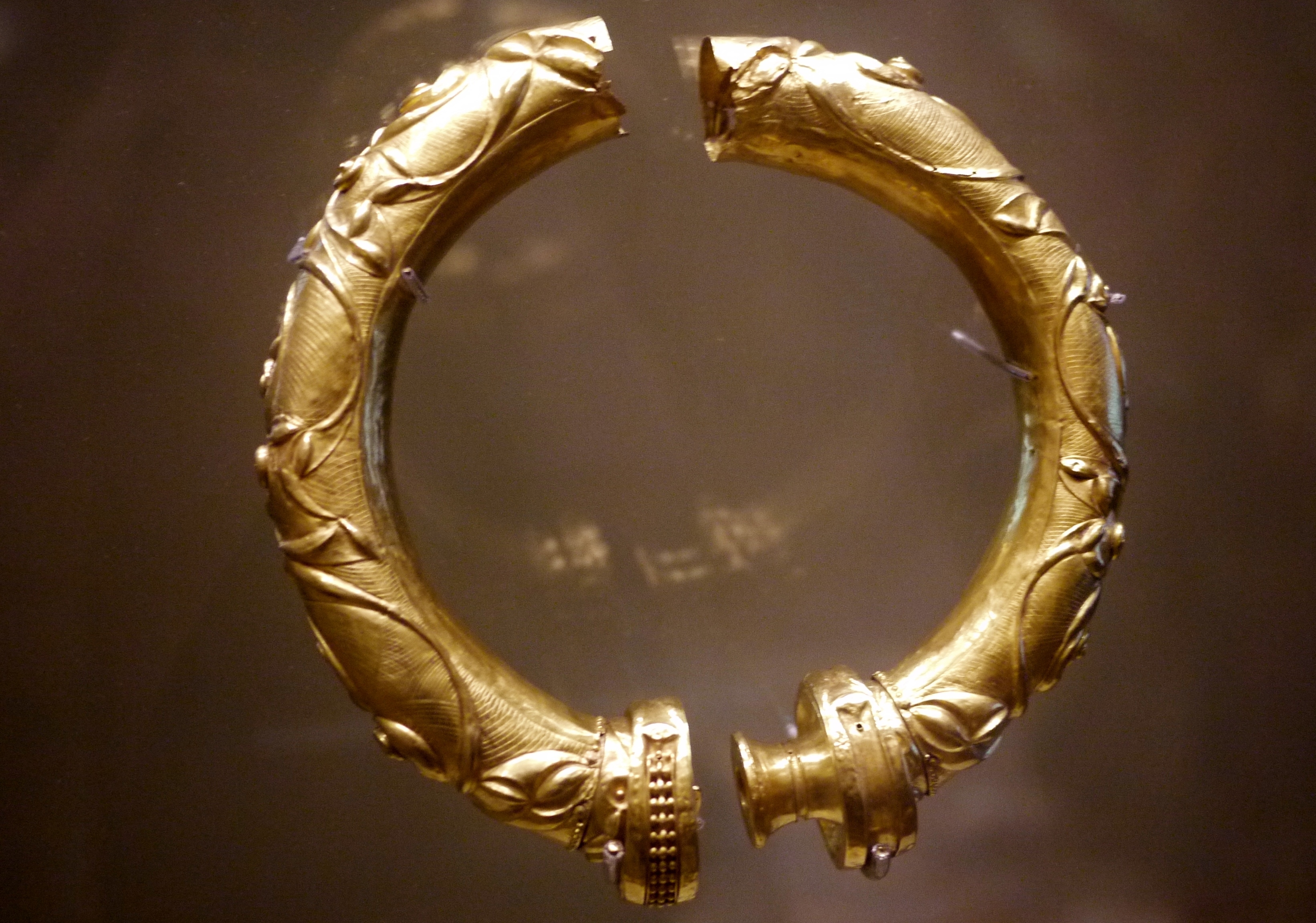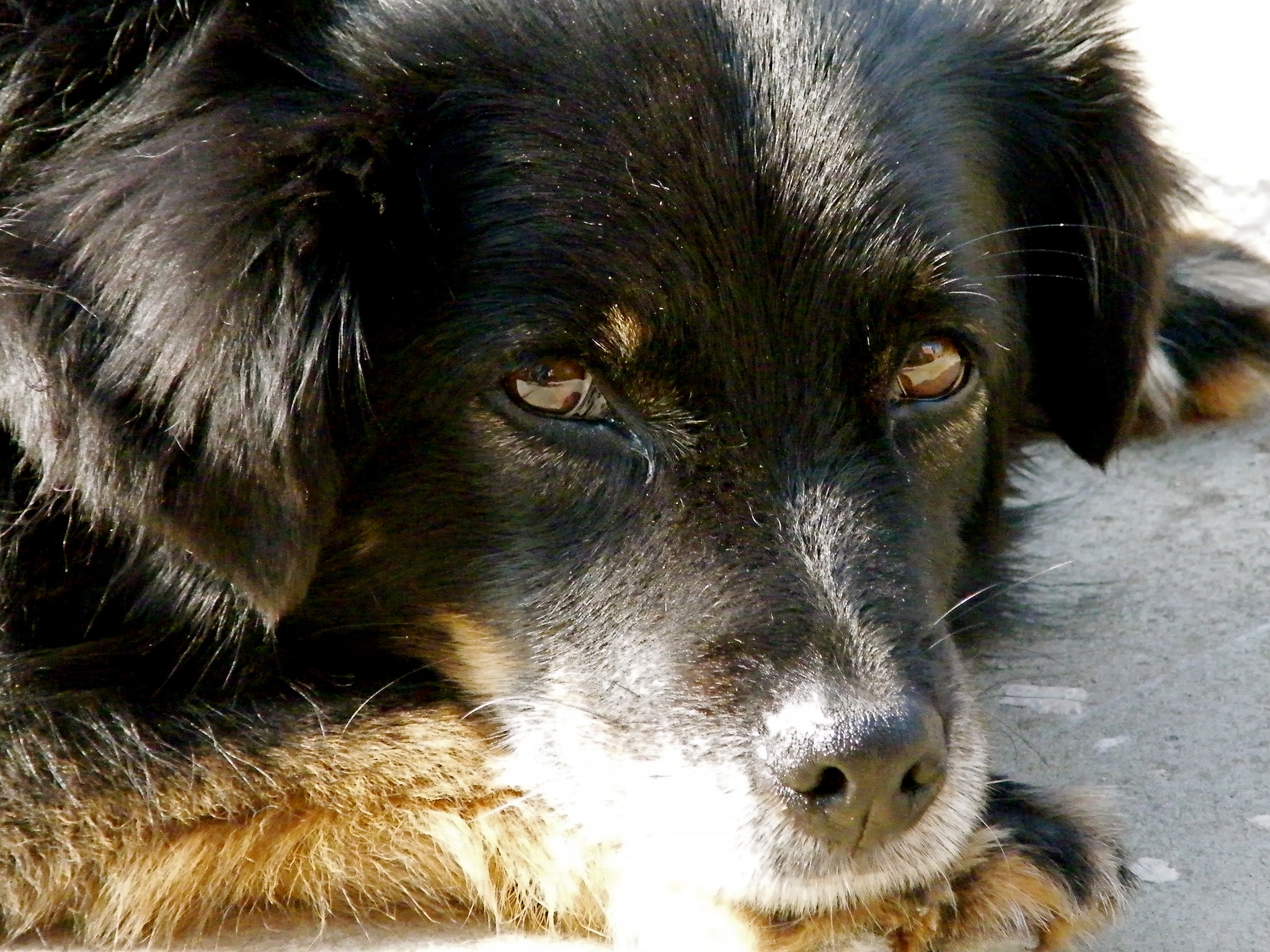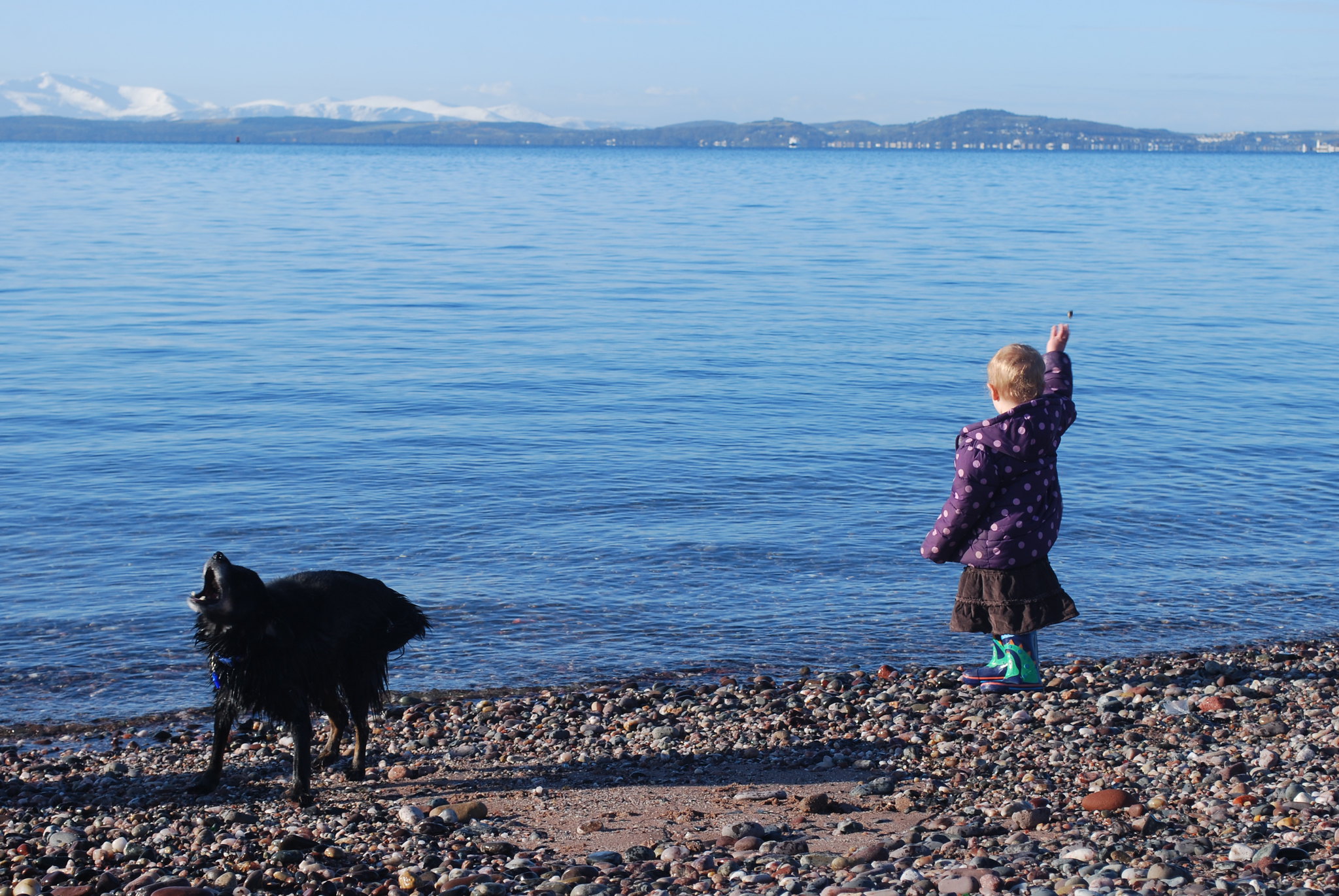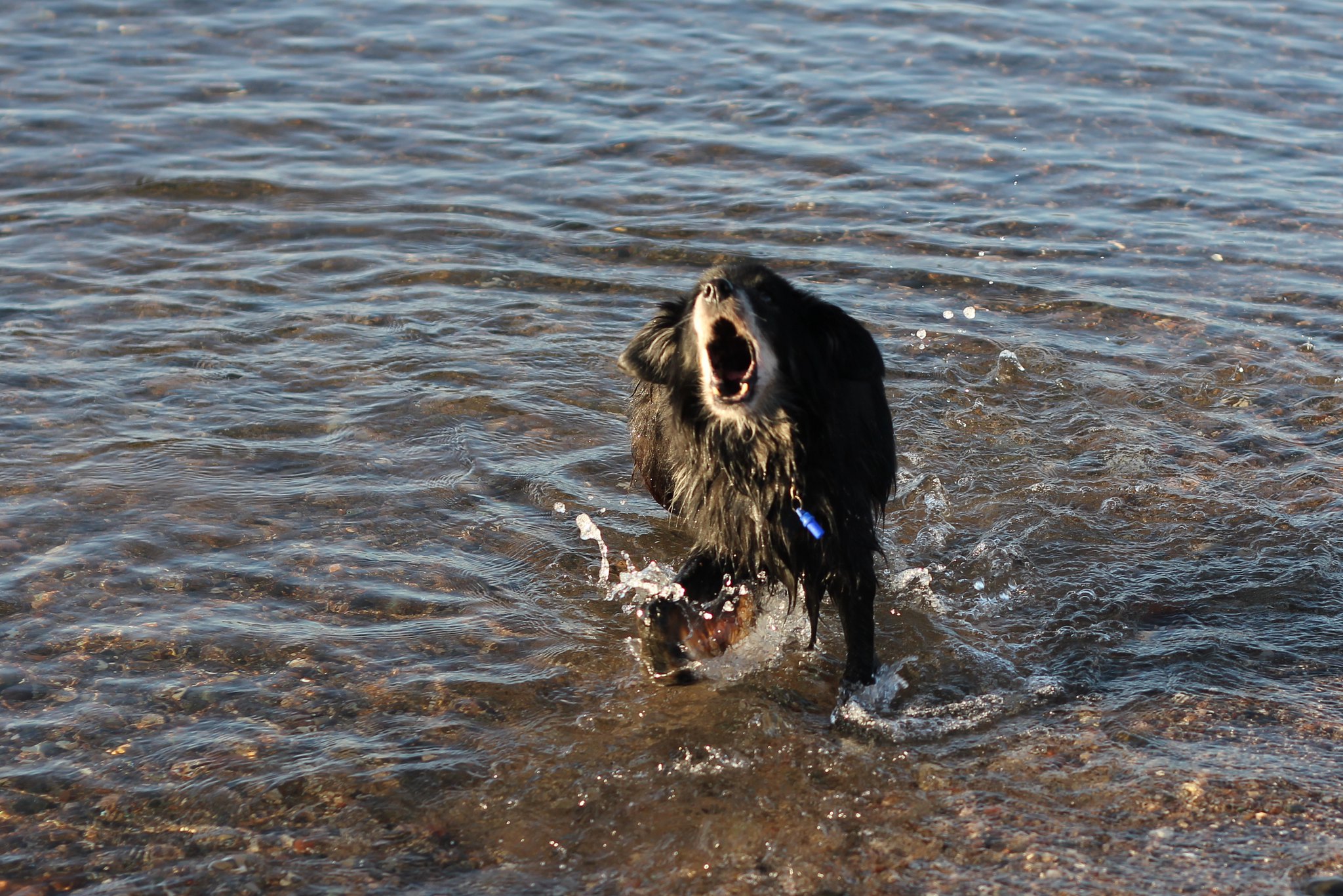One of the traditions that has long piqued my interest is the tradition of offering porridge or ale to Shony and its possible connection to Manannán, and since I was poking around a few old journals and found some stuff that provoked some Thoughts, I figured I'd work them all out here.
The custom has been most famously described by Martin Martin, who wrote about it in his
A Description of the Western Islands of Scotland, first
published in 1703:
"John Morison of Bragir told me that when he was a boy, and going to the Church of St. Malvay, he observed the natives to kneel and repeat the Paternoster at four miles distance from the church. The inhabitants of this island had an ancient custom to sacrifice to a sea-god called Shony, at Hallow-tide, in the manner following: The inhabitants round the island came to the Church of St. Malvay, having each man his provision along with him; every family furnished a peck of malt, and this was brewed into ale; one of their number was picked out to wade into the sea up to the middle, and carrying a cup of ale in his hand, standing still in that posture, cried out with a loud voice saying, "Shony, I give you this cup of ale, hoping that you'll be so kind as to send us plenty of sea-ware for enriching our ground for the ensuing year"; and so threw the cup of ale into the sea. This was performed in the night time. At his return to land they all went to church, where there was a candle burning upon the altar; and then standing silent for a little time, one of them gave a signal, at which the candle was put out, and immediately all of them went to the fields, where they fell a-drinking their ale, and spent the remainder of the night in dancing and singing, &c.
The next morning they all returned home, being well satisfied that they had punctually observed this solemn anniversary, which they believed to be a powerful means to procure a plentiful crop. Mr. Daniel and Mr. Kenneth Morison, ministers in Lewis, told me they spent several years before they could persuade the vulgar natives to abandon this ridiculous piece of superstition; which is quite abolished for these 32 years past."
Some of the key points that have been debated over the years include who, exactly, Shony is, and what Martin meant by "Hallowtide."
Some academics argue that "Shony" is Gaelic for Johnny (
Seónaidh), possibly St John the Baptist, and that it's related (in a very roundabout way) to Manannán:
The porridge, gruel or ale was dedicated to a god or saint called Manannan (Manntan, Bannan) or Shony (Seónaidh)... As it involved immersion and was usually performed on the night of Holy Thursday in Easter Week, it appears that Seónaidh is St John the Baptist, having undergone gradual Christianisation from Manannan mac Lir through St Bannan. Some writers, notably Banks and Hutton, have misunderstood Martin's 'Hallowtide' as meaning that the ceremony took place at Hallowe'en. In one recorded instance in Lewis (MacPhail 1895, p.166) Manannan turned into St Brendan the Navigator (Brianailt, Brianuilt) instead, and the ritual took place on his feast-day, 15 May...
Black, The Gaelic Otherworld (2005), p590.
Others favour a Scandinavian influence in the name, suggesting that "Shony" comes from the Old Norse
son-, meaning "an atonement, a sacrifice:"
As ö from Norse would become o, an fn became nn, one thinks of Sjöfn, one of the goddesses in the Edda. In any case the word is Norse. Captain Thomas thought the word was són, a sacrifice; sjóni, a nickname in the Landnámabók, and akin, suggested Vigfusson, to són, atonement, sacrifice; German sühne, ver-söhnung. In the Hebrides they gave what they had, which would account for the departure from ancient usage. The ancient Norse sacrifice of atonement was thus performed: “The largest boar that could be found in the kingdom was on Yule-eve laid before the king and his men assembled in hall; the king and houseman then laid their hands on the boar’s bristly mane and made a solemn vow… The animal being sacrificed, divination took place, probably by chips shaken in the boar’s blood…. Són was the name of one of the vessels in which the blood of Kvásir, the mead of wisdom and poetry, was kept” (Cleasby-Vigfusson). But cf. N. sjóli, which occurs in an epithet of Thor: himin-sjóli, heaven-prop, heaven-defender (?), hence perhaps king.
Henderson, The Norse Influence on Celtic Scotland (1910), pp101-102.
Henderson has a tendency to assign Norse origins to a lot of things, rightly or wrongly, and it has to be said that the description of the sacrifice doesn't suggest much in the way of similarities with Shony's offerings. This doesn't rule out any Norse influences, conclusively, but (personally) I'm skeptical. Stiùbhart mentions the possible Norse connection, but also suggests that the word may have originally been something like "Sionn" or "Sionnaidh," giving a cognate with Gaelic words like
sionn (something mysterious, uncanny, supernatural),
sionnach (a fox),
sionnachan (Will-o'-the-wisp), and
sionnaich (bright). Clearly something Otherworldly or supernatural, either way, and the people of Lewis long had a tendency to refer to supernatural beings and other kinds of phenomena with euphemisms – the
sìth being
muinntir Fhionnlaigh, for example, or an Otherworldly whirlwind that has a tendency to spring up on the moors being known as
uspag Fhionnlaigh. Stiùbhart further suggests that the "Fhionnlaigh" in question here may well be "a modern 'rationalisation' of the original 'Sionnaidh'." Although on the surface this might seem like a bit of a stretch, both "Shionn" and "Fhionn" would sound quite similar to the ear, since the lenition (the addition of the "h" after the consonant) kills the sound of the consonant before it and you'd end up with a "h" sound instead.
If this is the case, we're probably not looking at an association with Manannán, as far as the offering to Shony goes, but more an offering to the spirits of the place (though presumably originally a deity, before Christianity?). Looking to
Dwelly's Dictionary, we find an entry for
seonadh that supports this idea:
seonadh -aidh, sm Augury, sorcery. 2 Druidism. Martin says that seonaidh is the name of a water-spirit which the inhabitants of Lewis used to propitiate by a cup of ale in the following manner. They came to the church of St. Mulway, each man carrying his own provisions. Every family gave a pock of malt and the whole was brewed into ale. One of their number was chosen to wade into the sea up to his waist, carrying in his hand a cup filled with ale. When he reached a proper depth, he stood and cried aloud “Seonaidh, I give thee this cup of ale, hoping that thou wilt be so good as to send us plenty of seaware for enriching our ground during the coming year.” He then threw the ale into the sea. This ceremony was performed in the night-time. On his coming to land, they all repaired to church, where there was a candle burning on the altar. There they stood still for a time, when on a signal given, the candle was put out, mid straightway they adjourned to the fields where the night was spent mirthfully over the ale. Next morning they returned to their respective homes, in the belief that they had insured a plentiful crop for the next season.
It seems clear that as far as the issue of timing goes, Black is right and Maundy Thursday (or Holy Thursday) was the traditional date, though he kind of glosses over what Hutton actually says about the matter. Hutton doesn't just state that it was held at Hallowe'en, but argues that:
The ceremony was ended in the 1670s after a determined campaign against it by the two ministers, but it simply migrated to, or resurfaced upon, the midnight before Maundy Thursday at the opening of the sailing season.
Hutton, The Stations of the Sun: A History of the Ritual Year in Britain (1996), p369.
Quite why it supposedly shifted from one part of the year to another isn't commented upon or explained by Hutton, making the claim seem less than convincing.
Returning to Ronald Black's commentary on the subject, after noting a possible connection with Manannán (above), he goes on to note that R. C. Maclagan records a "development" of the rite, which began involving animal sacrifice:
Dr R. C. Maclagan was told of a development of the custom as practised in Lewis c. 1800. Just as the porridge, gruel or ale had formerly been given to the sea to stimulate a supply of seaweed to fertilise the fields, so was a living creature now given to it to encourage the fish (Tocher 20, p.162): "A sheep or goat was offered as a sacrifice. The oldest man of the sea was expected to take the lead, assisted usually by the one who came second in respect of seniority and experience. The animal was brought down to the edge of the sea, and after a certain order of procedure was observed, the officiating person, who was a kind of priest for the occasion, in the midst of dead silence, and surrounded by the whole company of those interested, who stood looking on, went down on his knees, and proceeded to kill the victim, whose blood was carefully caught in a dish. This over, the officiating man waded out into the sea as far as he could, carrying the vessel in which the blood was, and scattered the blood as widely as he could on the water round about him. Then followed the disposing of the carcase, which was cut up into pieces corresponding to the number of poor persons in the district, and a piece was sent to each such person, to be eaten by them; but none else would touch it."
Black, The Gaelic Otherworld (2005), pp590-591.
However, Domhnall Uilleam Stiùbhart has since published a letter from 1700 that describes animal sacrifice being involved already, a hundred years before Maclagan described this "development"; even more interesting is that the letter was written by John Morison (Iain mac Mhurch' 'c Ailein), the same person who Martin says was his informant in describing the offerings to Shony that he included in his
A Description of the Western Islands of Scotland.
The letter that Stiùbhart published and provides commentary on is "Ane Accompt of some heathenish & superstitious rites used in the Isle of Lewis given by a friend to Mr Alan Morisone Minister of Ness 15 April 1700," and in it the author lists a number of "paganish customes," some of which he fears are "not as yet abolyshed." In giving a list of these customs, he includes:
Others contribut a quantity of Corn & make malt of it, & brew it into ale, and drink it in the kerk pouring the first coigfull into the sea, that they may have fish the better that yeir and sea ware for there land, And all the town with joyn in this work but now its abolyshed, they called this kynd of sacrifeceing Shion, but the Etymology of that word I know not. Others killed ane heiffer or bullock and threw the blood of it into the sea wt certaine rites and ceremoines promiseing to themselves therby the more abundance of fysh and sea ware to be brought ashore to them.
Stiùbhart, "Some Heathenish and Superstitious Rites: A Letter from Lewis, 1700," Scottish Studies: the journal of the School of Scottish Studies 34 (2000-2006), pp205-205.
According to Morison, then, the sacrifice of a cow was an alternative method of doing the same thing (perhaps something that was reserved for more desperate times?)
In spite of the author's claims that the rite was already "abolyshed" by his time of writing, references to such efforts continued up into the 1900s, though it's not entirely clear if the descriptions are from contemporary accounts, or are a recycling of Martin Martin's own description. Alexander Carmichael mentions the custom in the
Carmina Gadelica, saying:
Maunday Thursday is called in Uist 'Diardaoin a brochain,' Gruel Thursday, and in Iona 'Diardaoin a brochain mhoir,' Great Gruel Thursday. On this day people in maritime districts made offerings of mead, ale, or gruel to the god of the sea. As the day merged from Wednesday to Thursday a man walked to the waist into the sea and poured out whatever offering had been prepared, chanting:
'A Dhe na mara,
Cuir todhar ’s an tarruinn
Chon tachair an talaimh,
Chon bailcidh dhuinn biaidh.'
O God of the sea,
Put weed in the drawing wave
To enrich the ground,
To shower on us food.
Those behind the offerer took up the chant and wafted it along the sea-shore on the midnight air, the darkness of night and the rolling of the waves making the scene weird and impressive. In 1860 the writer conversed in Iona with a middle-aged man whose father, when young, had taken part in this ceremony. In Lewis the custom was continued till this century. It shows the tolerant spirit of the Columban Church and the tenacity of popular belief, that such a practice should have been in vogue so recently.
Carmichael, Carmina Gadelica Volume I (1900), pp162-163.
Although Carmichael doesn't mention Shony explicitly, it's clear that he's describing the same rite as Martin and our letter-writing friend up above. Mark Williams favours the idea that Carmichael was drawing from Martin and argues that "Carmichael was drawing, not on oral tradition, but on a text that was already two centuries old," (p366) and that he "hedged" with referring to "
A Dhe na mara" rather than explicitly naming Shony:
Carmichael's version generalized Martin's highly local account... and ignored his testimony that it had long been extinct. He also gave a Gaelic version of Martin Martin's invocation which looked so suspiciously like a verse from one of the Carmina that it may well have been his own back-translation from Martin's English. If this is so, he inserted another significant hedge, replacing the outlandish 'Shony' with the tactful A Dhè na mara, which he translated 'O God of the sea.' The difference between the 'God of the sea' and the 'god of the sea' exactly encapsulates the tension between piety and paganism that Carmichael was negotiating.
Williams, Ireland's Immortals: A History of the Gods of Irish Myth (2016), p368.
If this is the case, Carmichael's prayer is effectively artificial, "back-engineered" from Martin's account. One thing that isn't explained here, however, is Carmichael's reference to having spoken with a man from Iona who's father had taken part in the rite; in spite of the problems with Carmichael's work, he very obviously did speak to a lot of people and collect information from them directly. I think here it seems likely that while Carmichael
did draw on Martin's description (consciously or not), he also noticed a similarity between Martin and his informant's description. To what extent he may have embellished or blended things to reflect what he
thought was "true" is unclear.
Carmichael also doesn't ignore Martin's reference to the fact that the custom was "long extinct" by his time as Williams writes, but neither does he present the custom as being current to his day. Claims like that – of customs "surviving until recently" – are a common trope amongst folklorists of his day, and if it weren't for the fact that other writers mention the custom as being recently observed it would be tempting to explain Carmichael's portrayal as just that: a common trope. There really does seem to be more to this than authors like Carmichael rehashing Martin and adding their own touches to things, and John Gregorson Campbell might be a good start in helping to explain why and how it survived, in spite of the Church's disapproval and attempts to stamp it out: Campbell mentions the custom a couple of times, first of all commenting that the rite was only observed during stormy weather in the spring after a sparse winter that was lacking in seaweed being brought to shore:
BIG PORRIDGE DAY (LÀ A' BHROCHAIN MHÒIR)
In the Western Islands, in olden times (for the practice does not now exist anywhere), when there was a winter during which little seaware came ashore, and full time for spring work had come without relief, a large dish of porridge, made with butter and other food ingredients, was poured into the sea on every headland where wrack used to come. Next day the harbours were full.
This device was to be resorted to only late in the spring – the Iona people say the Thursday before Easter – and in stormy weather. The meaning of the ceremony seems to have been that by sending the fruit of the land into the sea, the fruit of the sea would come to land.
Black, The Gaelic Otherworld (2005), p134.
In his commentary on the Gaelic year, Campbell reiterates this point:
SHORE OR MAUNDY THURSDAY
This was the Thursday before Easter, and was known in the Hebrides as là Brochain Mhòir, 'the day of the Big Porridge'. It was now getting late in the spring, and if the winter had failed to cast a sufficient supply of seaweed on the shores, it was time to resort to extraordinary measures to secure the necessary manure for the land. A large pot of porridge was prepared, with butter and other good ingredients, and taken to the headlands near creeks where seaweed rested. A quantity was poured into the sea from each headland, with certain incantations or rhymes, and in consequence, it was believed, the harbours were full of sea-ware. The ceremony should only be performed in stormy weather. Its object no doubt was, by throwing the produce of the land into the sea, to make the sea throw its produce on the land.
Black, The Gaelic Otherworld (2005), pp548-549.
So it seems plausible that it was only done during times of need (or at least ended up that way, after the Church succeeded in stopping it for a time), and this could easily explain why it keeps on popping up over the centuries after having "died out." As Alexander Carmichael points out, seaweed was incredibly important to the local economy in the Western Isles because it was used as manure:
The people of the Western Isles are greatly dependent upon seaweeds for the manuring of their lands. The soil, being for the most part either peaty or sandy, and containing little lime, mineral salts, etc., is poor and infertile unless constantly refreshed by seaweed, which, though rather poor in quality, is available in large quantity. Seaweed is detached by the action of storms and thrown upon the shores by the prevailing westerly winds. The scarcity of seaweed caused by a prolonged calm period is a serious matter; the people watch and hope and pray for the coming of seaweed, and are anxious at the prospect of impending famine. When the seaweed comes they rejoice and sing hymns of praise to the gracious God of the sea Who has heard their prayers.
Carmichael, Carmina Gadelica Volume IV (1941), pp32-33.
This is something that Carmichael had previously written about in his
Grazing and Agrestic Customs of the Outer Hebrides (1884), which he produced for the Crofter Royal Commission. It's pretty clear that without the seaweed, things could get pretty dire. Old ways die hard, and tried and tested tradition are easy to fall back on when the stakes are raised.
Returning to the
Carmina Gadelica, Carmichael goes on to give an example of a prayer (or hymn) that celebrates the arrival of the seaweed, and then follows it with an
Ortha Feamainn, "Prayer for Seaweed." What's interesting about this prayer – published in Volume IV of the
Carmina, which came out posthumously in 1941 and well after John Gregorson Campbell had died as well – is that the first two lines of it echo – almost exactly – the last line of Campbell's about "throwing the produce of the land into the sea, to make the sea throw its produce on the land." The
Ortha goes:
Toradh mara gu tìr,
Toradh tìre gu muir;
Neach nach dèan 'na ìr,
Crìon gum bi a chuid.
Feamain 'ga cur gu tìr,
Builich, a Thì na buil;
Toradh 'ga chur an nì,
A Chrìosda, thoir mo chuid!
Produce of sea to land,
Produce of land to sea;
He who doeth not in time,
Scant shall be his share.
Seaweed being cast on shore
Bestow, Thou Being of bestowal;
Produce being brought to wealth, [fruitfulness being caused in kine]
O Christ, grant me my share!
Carmichael, Carmina Gadelica Volume IV (1941), pp34-35.
The similarities here makes me wonder if Campbell was (independently) aware of the prayer himself and was referencing it, consciously or not.
But still, Campbell doesn't mention Shony, and Carmichael uses the term "God of the sea" on more than one occasion, which gives a clear hint that he was well aware of
something going on but for whatever reason didn't go into details. So far, though, we only have Black's speculation on Manannán's connection with the custom. Both Carmichael and John Gregorson Campbell make clear references to Manannán in other prayers, so clearly they weren't shy of mentioning him or other figures they may have seen as pagan. The fact that they didn't make a connection with him in relation to the offering to Shony, or mention Shony either, suggests that they weren't aware of anything like that, not that they didn't want to say.
Looking elsewhere, we find a key piece of information that might help to explain what's going on here.
Alexander Macbain gives us this tidbit after rehashing Martin's description of the offerings to Shony:
This superstition is but lately dead, though the sacrifice had been repressed, for they proceeded in spring to the end of a long reef and invoked “Briannuil” to send a strong north wind to drive plenty sea-ware ashore.
Macbain, Celtic Mythology and Religion (1885), p100.
This is presumably corroborated by the source that Black references above (
an article I can't access), which links Brendan the Navigator (
Brianailt, Brianuilt) with Manannán, and was apparently observed on May 15. Either way, it seems clear that the custom continued, and as it did so, it continued under a slightly different guise. This goes a long way to explaining why it's so difficult to pin down just who we're dealing with here.
So are we looking at Manannán in one form or another here? Or some kind of local spirit? Or what? Following up the references that Black gives in his notes in relation to all this (the ones I
can access), I've found an explicit reference to Manannán being connected to the custom from Eoghan Mac a Phi, in his
Am Measg nam Bodach (1938), but he doesn't say where this information comes from. The comparatively late date of publication here doesn't help to inspire confidence... Poking around elsewhere, however, brought up an intriguing piece of commentary from Malcolm MacPhail that adds a slightly more convincing link (assuming Black's equation between Manannán and Banann/Manntan is correct):
Lite-cuire (Sowing-porridge), otherwise Lite-Mhanntan (Manntan’s porridge), was porridge made of Ulag-meal, and made once a year only, of what remained over, after sowing, of the grain that had been prepared and set apart for seed-corn. Thick porridge was made of this Ulag-meal. The thicker and richer the porridge the heavier and richer would be the crops in harvest.
This custom came down almost to our own times embodied in the following rhyme:
“Là lite Mhanntain,
Lá ‘us fearr air bith;
An coire ‘us an croucan,
’S a’ maide crom air chrith.”
“The day of Manntan’s porridge,
The best day of all;
Kettle-crook, and crooked-stick,
Shaking like to fall.”
Ulag was grain expeditiously dried for the quern, either in a pot over the fire or by a red-hot stone that was being kept perpetually rolling among the grain in a tub. The operator preserved his hands from being injured by the hot stone by keeping both his hands full of grain as he rapidly rolled the stone round. Ulag so made is the origin of the Gaelic proverb, which not many understand now: “Clach fo shiol” (stone under grain); or in full: “Tionndadh na claich fo’n t-siol” (turning the stone under the grain); in other words, “A rolling stone gathers no moss.”
MacPhail, "Folklore from the Hebrides IV," Folk-Lore Volume IX (1900), pp440-441.
It doesn't say what happened with the porridge, but presumably at least some of it was given as an offering, if not all of it. What's interesting, though, is that the custom described here is explicitly associated with the fields, not bringing the seaweed to shore. If offerings were made to the sea to bring the seaweed, it would make sense that similar customs would be observed when sowing the seeds in the very fields that are fertilised with that seaweed, too.
The frustrating thing is that all of this doesn't exactly add up to much that's especially conclusive... But it does offer a bit more perspective, I think. Clearly there's something going on here and it's a lot more complex than it might seem on the surface.








